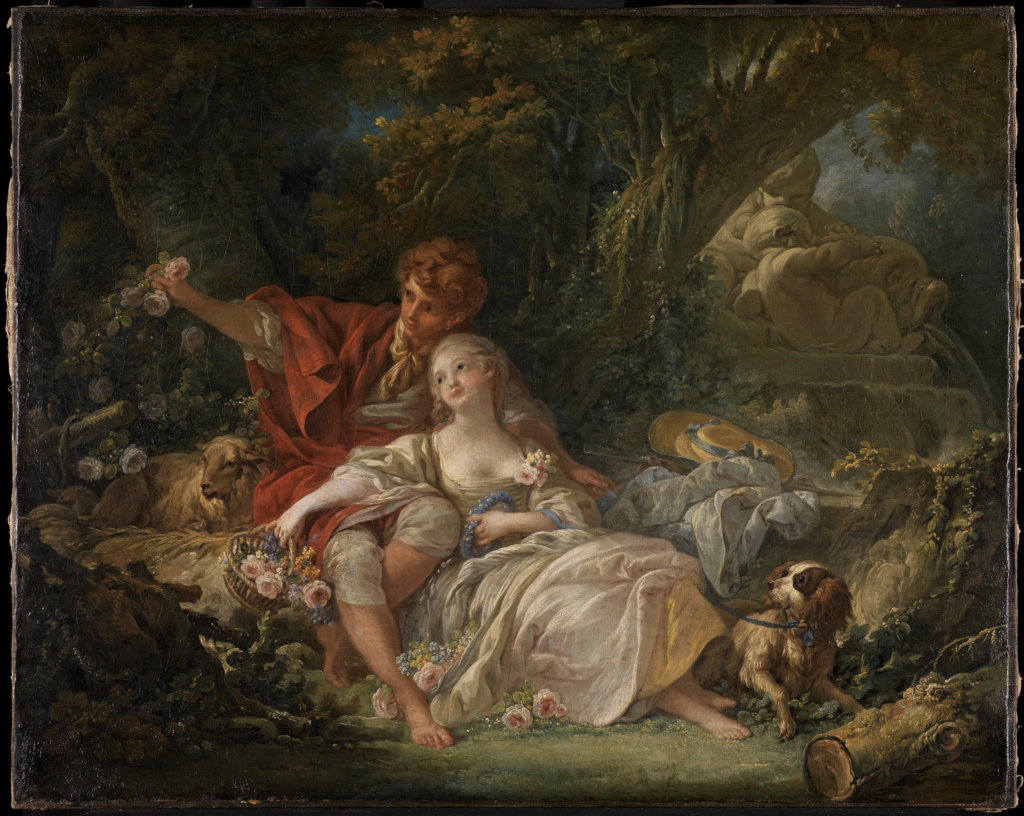
| X (Twitter) | |
|---|---|
URL kopieren
Die URL wurde erfolgreich kopiert und befindet sich in der Zwischenablage |
|
Aus urheberrechtlichen Gründen können wir die Werkabbildung leider nicht zum Download bereitstellen.
Hier erfahren Sie mehr.Shepherd and shepherdess
François Boucher
H 81cm W 64.5cm
1760
KunsthalleKarlsruhe@ZKM
500 years of the presence
0:00
0:00
While artworks owned by the Margraves of the 16th and 17th centuries were the first building blocks of the present Kunsthalle collection, the acquisitions of Margravine Karoline Luise in the mid-18th century are its real core.
The up-to-date Margravine
“This may also interest you…” — today, many a newsfeed, many a compact and personalised compilation of news in the digital media keeps us informed. Margravine Karoline Luise already had such a network of information providers 200 years before the Internet was invented. It was broadly based, was consistently maintained by her, and supplied her with news tailored exactly to her interests. Her interests were extremely varied. And last but not least—and decisive for the Kunsthalle—they concerned the fine arts.
The Master Collector
In her mid-30s, the Margravine of Baden in Karlsruhe began systematically to purchase artworks. Correspondents and agents provided her with the requisite information, such as illustrations of works, printed catalogues, or catalogue copies of private collections. They knew the focus of their client’s collecting passion: 17th century Dutch painting and contemporary French art.
Successful advertising campaign
Of the artists of her time, Karoline Luise had taken a particular liking to François Boucher, and she purchased several works from him directly that became style-defining for the subsequent décor in Karlsruhe Palace. The artist availed himself of reproduction graphics — copies of drawings or paintings as prints — which he had produced to the highest standard, to publicise his works to a wider audience. This method proved very successful, for it was on the basis of having seen such prints that Karoline Luise commissioned these two shepherdess scenes from Boucher. The art agent Jean-Henri Eberts had arranged the commission and he also kept the Margravine continuously informed about the progress of the works. Even before Karoline Luise took delivery, she was convinced that when she actually saw the completed works she would be overwhelmed.
The client contributes
As commissioner of the works Karoline Luise undoubtedly exerted an influence on the works while they were being created—just as Christopher I of Baden had done with the large-scale votive painting known as the Markgrafentafel. However, Karoline Luise was not motivated by a desire for ostentation or display. Rather, the Margravine’s concern was to promote the characteristic features of the artist’s work, and his talent. Thus, she did not have herself depicted by Boucher, but wanted him to include a large number of animals because the artist was known for his great skill in executing these motifs. Karoline Luise herself used the finished pictures as study objects.
Dates and facts
| Title | Shepherd and shepherdess |
|---|---|
| Artist | François Boucher |
| Date | 1760 |
| Measurements Painting | H 64.5cm W 81cm |
| Material | Oil on canvas |